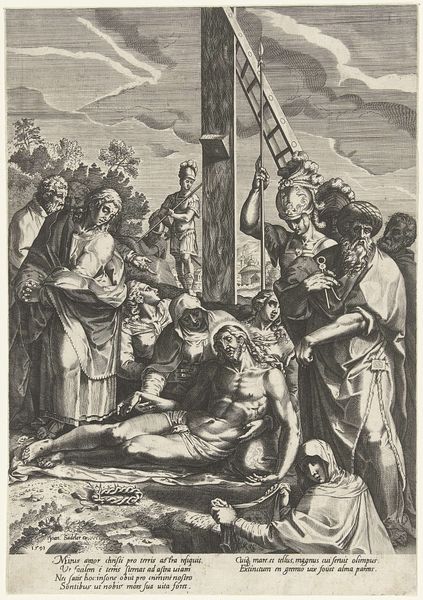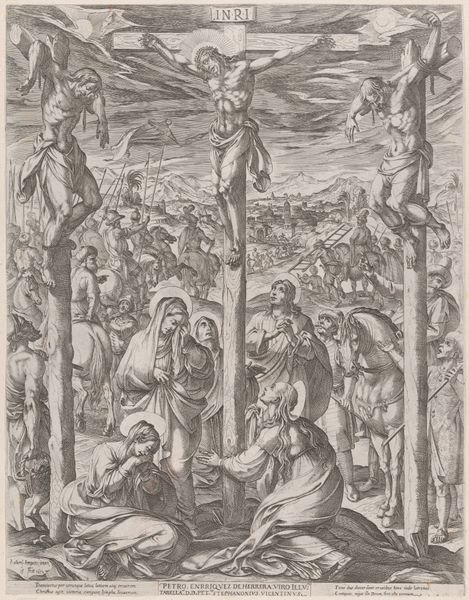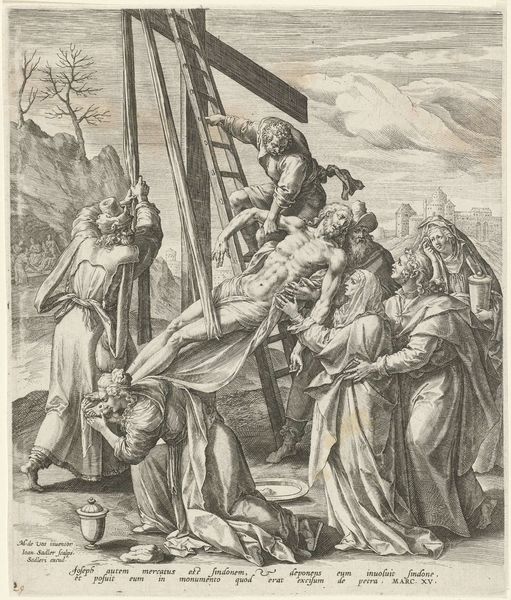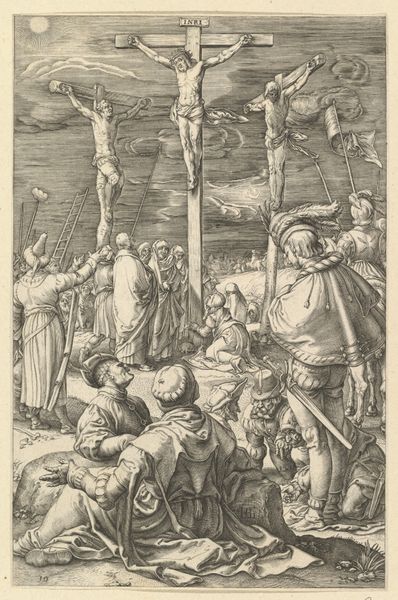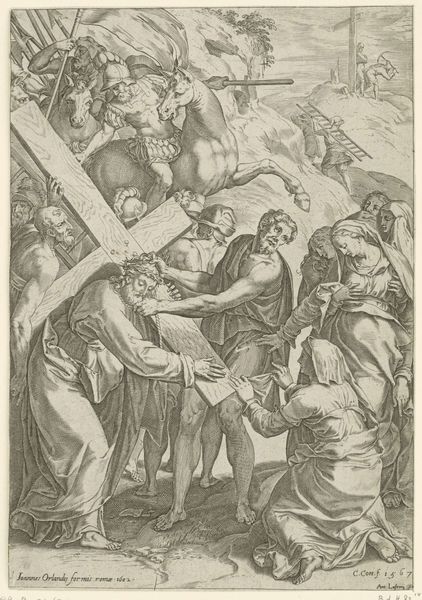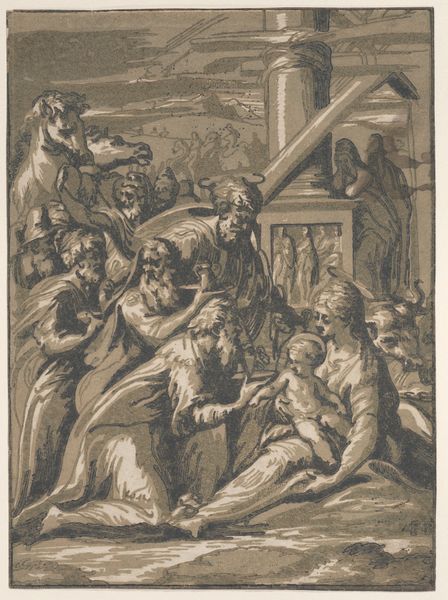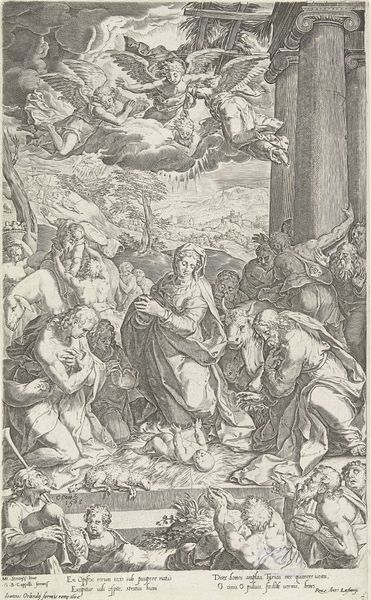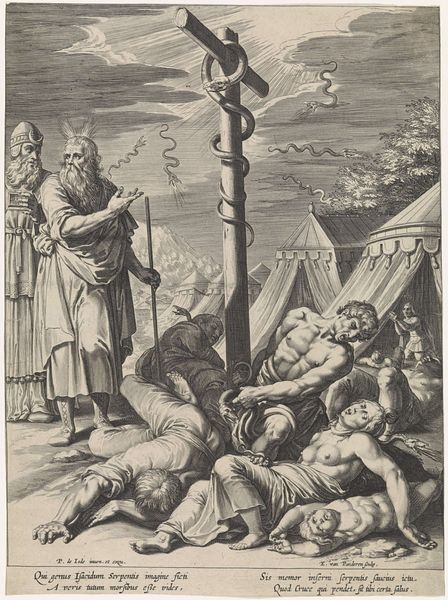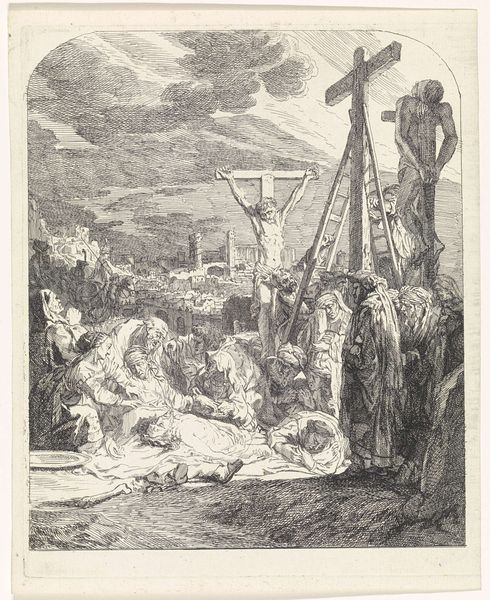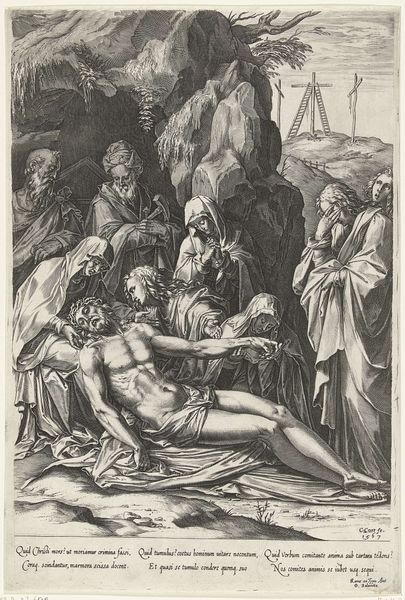
print, engraving
#
portrait
#
baroque
# print
#
figuration
#
line
#
history-painting
#
engraving
Dimensions: height 287 mm, width 208 mm
Copyright: Rijks Museum: Open Domain
Curator: This print, currently residing at the Rijksmuseum, is entitled "Bewening van Christus onder het kruis", which translates to "The Lamentation of Christ Beneath the Cross". Made by an anonymous artist before 1612, it’s an engraving that masterfully captures a moment of intense grief. What’s your first impression? Editor: Overwhelming somberness. The composition is densely populated, the lines heavy and sharp, almost digging into the paper to depict profound sorrow. It's hard to ignore the cultural weight a piece like this holds. Curator: Absolutely. Prints like these played a significant role in disseminating religious iconography. Note the stylized depiction of Christ’s body and the highly theatrical poses of the mourners, common in Baroque art. It reinforces a very specific image, intended to stir deep feelings within the viewer. The Crown of Thorns is symbolic, and notice how light emanates from Christ. It tells a whole story in these repeated forms, almost like a collective memory that has been constructed. Editor: The focus on grief almost feels performative, shaped by a male-dominated, religious worldview. We have to remember these are constructed emotions designed to create a kind of moral pressure. There’s little agency here for women. While these women weep for Christ, it's difficult not to see the societal constraints and patriarchal roles defining their responses. What social codes and cultural assumptions are reflected in the expressions? What might be suppressed in the way the print depicts its scene? Curator: A very poignant question. It raises questions of authorship. Even though we may not know the individual artist, how much freedom would someone like that have, especially in a religious work? I find myself looking at how a standardized emotional response, sorrow, transcends an artist. But to your point, a work like this should inspire us to explore its cultural echoes. Editor: It’s this tension between the historical power structures embedded in the artwork and our present understanding of its impact that keeps these pieces relevant. I find it fascinating and problematic to continue exploring those intersections.
Comments
No comments
Be the first to comment and join the conversation on the ultimate creative platform.

